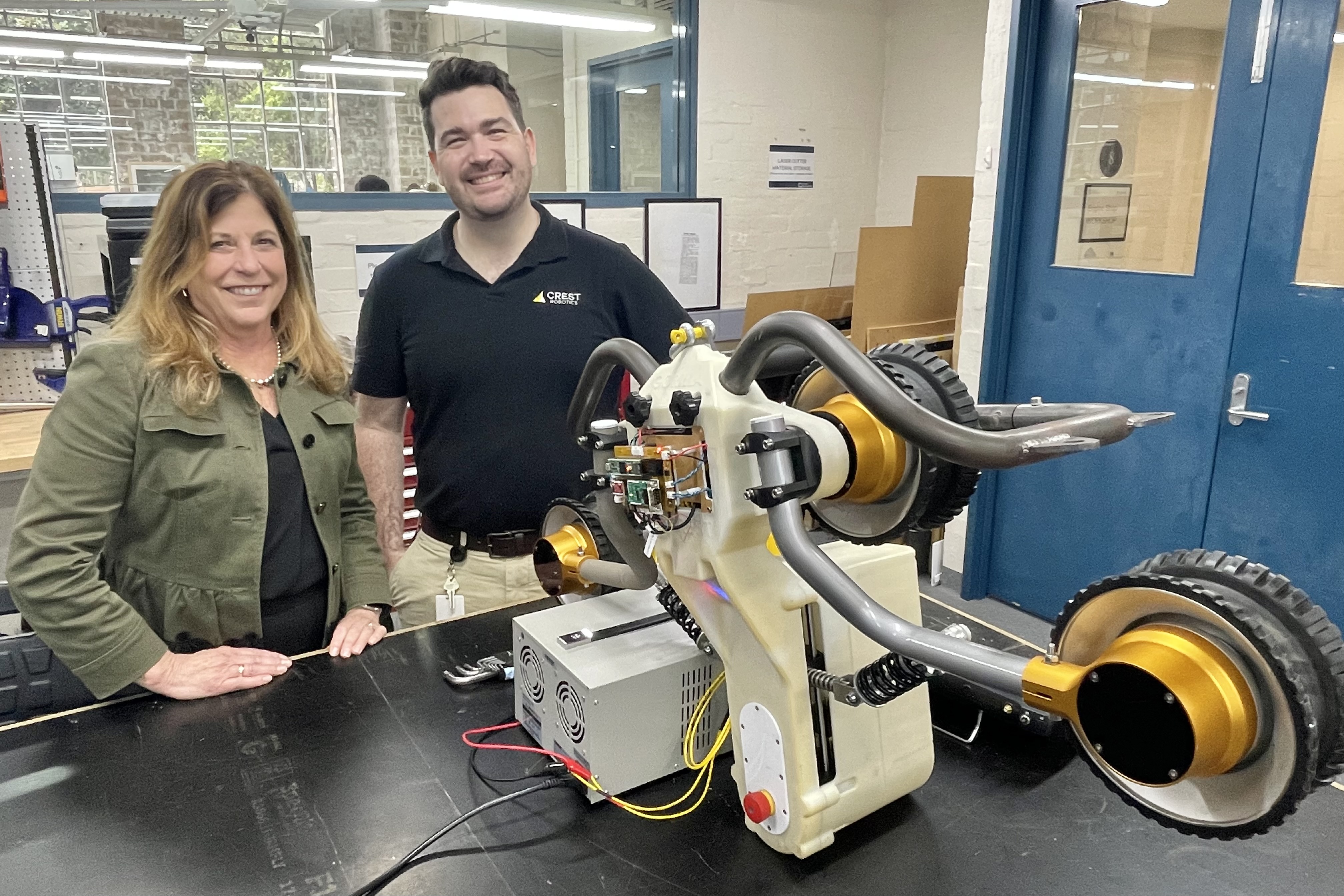In an Australian first, Transgrid is trialling advanced robotic technology, inspired by NASA, which will make work on transmission lines safer and more efficient.
21 October 2024
The transmission network has taken delivery of two test units of the Gorilla Mk1 robotic puller, developed in Sydney by Crest Robotics.
The wireless technology, designed for use on transmission lines, can be used remotely to deploy safety systems before new conductors are pulled over crossings such as major roads or live powerlines.
Executive General Manager of Network Marie Jordan said: “Our network includes more than 13,000km of high voltage transmission lines in all kinds of challenging terrain, including dangerous and remote locations so by embracing innovative technology, we can better manage risks and reduce costs.
“Transgrid is always on the lookout for innovative solutions to help progress the energy transition. This robotic technology, developed in Australia, will help reduce some of the need for people to work at heights when replacing ageing conductors.
“Working with Crest Robotics we’re able to bring space exploration technology back to earth to keep our people safe.
“By bringing innovation and safety together we can work more efficiently, do these projects more quickly and at a lower cost, keeping it affordable as we make necessary upgrades to our system.
“It’s exciting to see how we can use this in the energy transition, to help us add more capacity on some existing lines, not just new lines, it creates more places we can bring renewable energy into our system,” she said.

Crest Robotics Founder Dr Clyde Webster has a PhD in Robotics Engineering and spent five months as a visiting researcher at the NASA Jet Propulsion Laboratory.
"With NASA we were looking at the best way to design lunar rovers for exploring the permanently shadowed regions of the moon.
“Working with the lunar rover program inspired me to look for ways we could bring some of the ideas being used in space and apply them to helping the energy transition here in Australia.
“The experience in developing lunar rovers helped us create this innovative piece of equipment to drive better safety outcomes for energy workers and improve the sustainability and cost-effectiveness of maintenance.
“It’s really gratifying to be able to apply the lessons learned from space technology to help make Australia's energy transition safer,” Dr Webster said.
The Gorilla Mk1’s space inspired design features four motorised hub wheels which can securely clamp onto lines to tow both safety devices and personnel along lines.
“When I was trying to figure out how to get robots to climb over obstacles on transmission lines, I used a similar bogey system that exists on NASA’s Perseverance Rover.
“I liken the technology to being like a 4WD for transmission lines as it can tow things along the line to where they are needed and can even assist with rescue operations if needed if workers get stuck at heights.
“The units operate wirelessly and include cameras so the operator can see exactly where they are working on the line and give them a bird’s-eye view for positioning of the device, as well as forward and back looking cameras for situational awareness,” Dr Webster said.
Each Gorilla unit weighs 20kg and can tow up to 280kg on a 30-degree incline. It can travel up to 20 metres in a minute, towing a full load and has a range of up to two kilometres which means it can traverse even the longest spans.
Each of the unit’s wheels contains a motor which clamps securely onto transmission lines and includes smart and dynamic internal control systems, developed in aerospace, to ensure traction and safety of the system is maximised.
“The machine is designed to understand the exact amount of force it is applying to the transmission line, so it means we never apply more force than is necessary, prolonging the life of the tyres and machine components, and importantly protecting the line,” Dr Webster said.
Transgrid recently demonstrated the robotic puller technology in western Sydney in preparation for it being deployed to help replace aged powerlines between Munmorah and Vales Point in Lake Macquarie.
Senior Project Manager for Transgrid Sean Blakers said the innovation has the potential to be a gamechanger for crews working on transmission lines.
“A huge benefit of using this system is the weight, it’s the manual handling issues that it alleviates, as this system is much lighter and could be lifted by one person if need be.
“Integrating it into our maintenance operations aligns perfectly with Transgrid’s commitment to safety and sustainability. We are excited about the potential this technology holds for the future of asset maintenance,” he said.
Media enquiries: Jonathon Hall 0428 413 708
